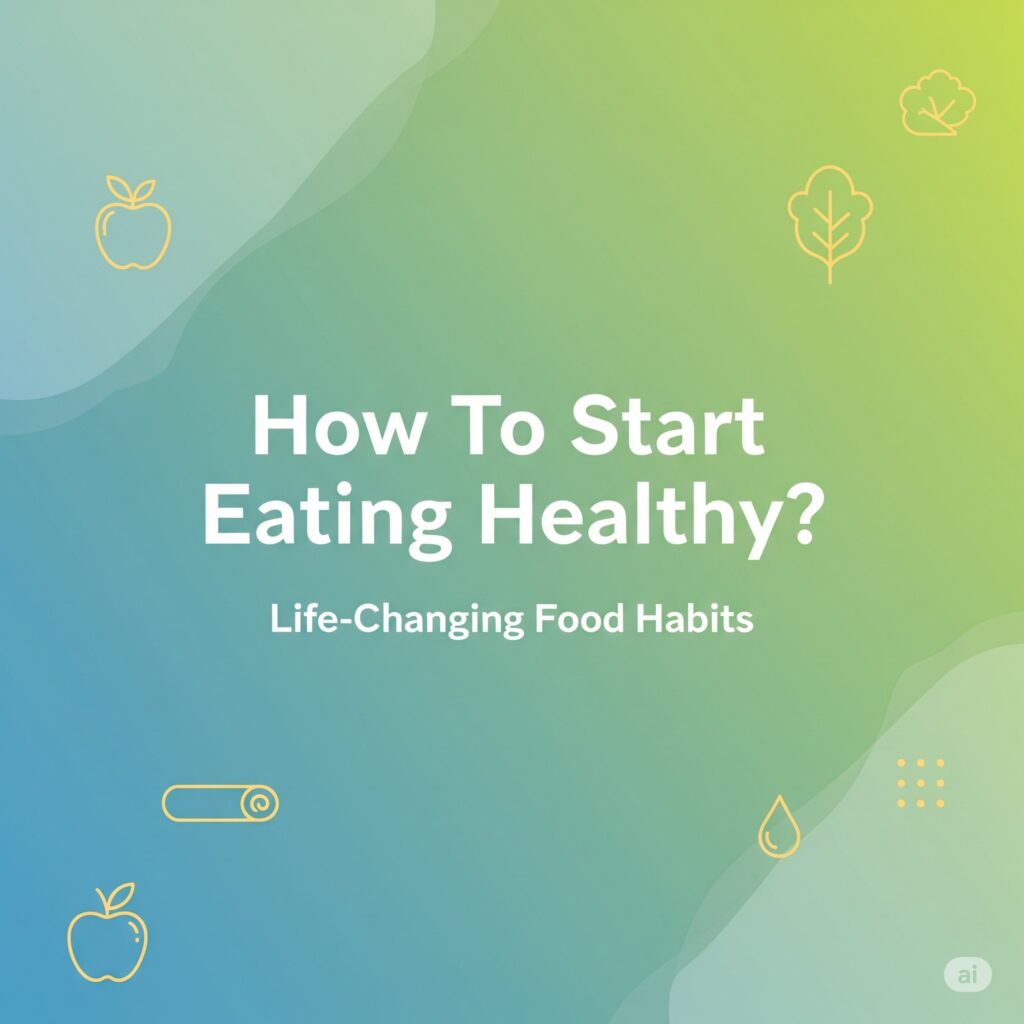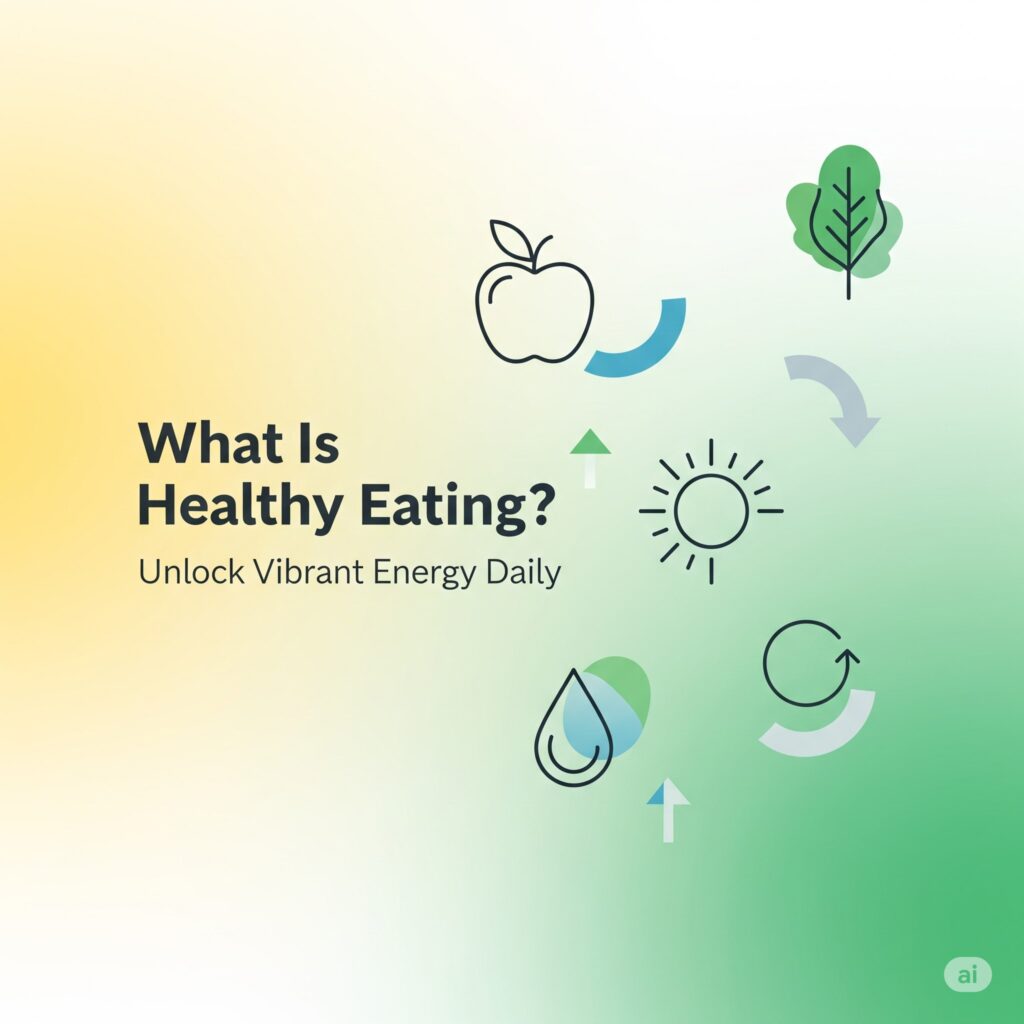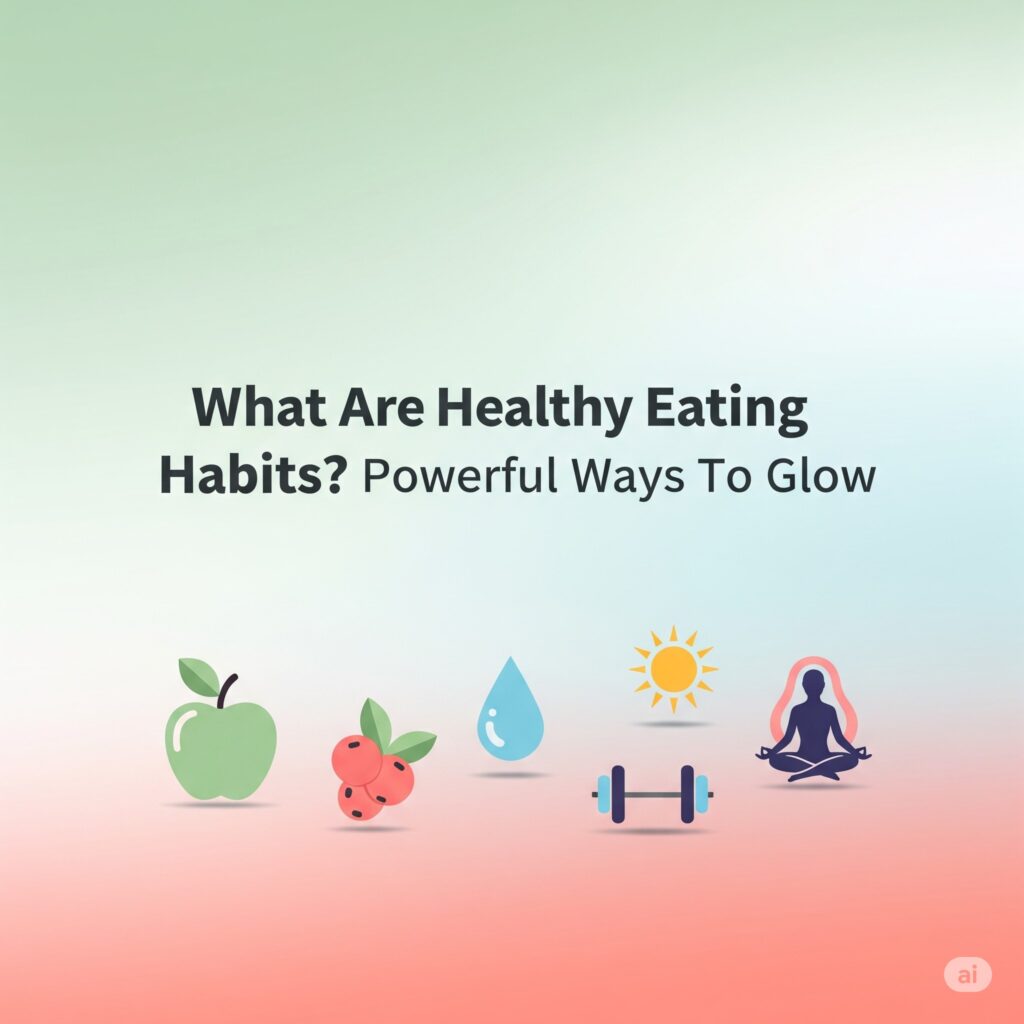Not sure where to begin with better food choices? Here’s how to start eating healthy with easy, everyday steps made just for students like you.
Starting to eat healthy can feel like a big step—especially when you’re busy with school, work, or just figuring life out. But here’s the truth: it doesn’t have to be complicated. Learning how to start eating healthy is really about making small, smart choices that fit into your everyday life.
So, what does how to start eating healthy actually mean? It means choosing foods that help your body and mind feel better. Think fruits, veggies, whole grains, and meals that give you energy instead of slowing you down. It’s not about strict diets or cutting out everything you love. It’s more about balance, building better habits, and feeling good from the inside out.
You might be wondering why it matters. Eating healthy helps you stay focused in class, feel less tired, and even handle stress better. For students, knowing how to start eating healthy can improve your mood, your grades, and your overall routine. And the best part? You don’t need to do it all at once. This blog will walk you through simple, doable steps to get started—no pressure, just progress.
Table of contents
- How to start eating healthy using AI meal planners?
- How to start eating healthy with smart kitchen tools?
- How to start eating healthy using food tracking apps?
- How to start eating healthy with personalized AI diets?
- How to start eating healthy on a busy student schedule?
- How to start eating healthy with a clean eating routine?
- How to start eating healthy without dieting or stress?
- How to start eating healthy with grocery list technology?
- How to start eating healthy by tracking your macros?
- How to start eating healthy with low-effort habits?
- How to start eating healthy with simple meal prep ideas?
- FAQs: How to start eating healthy?
- Conclusion
How to start eating healthy using AI meal planners?
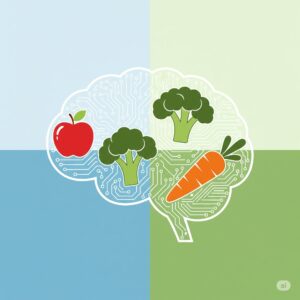
Make smarter food choices with tech on your side. Starting a healthy diet can feel confusing, especially when you’re not sure what to cook or eat every day. That’s where AI meal planners make a huge difference. They help you build better eating habits without the stress of figuring it all out yourself.
What are AI meal planners?
AI meal planners are smart apps or tools that create personalized meal plans for you. They look at your goals—like eating more veggies, cutting down on sugar, or staying under a calorie limit—and give you daily meals to match. Some even generate grocery lists, track your nutrition, and adjust your meals based on your feedback.
If you’re wondering how to start eating healthy, using these tools is a smart first step. They remove the guesswork and save time.
Why do students love using them?
Students often deal with limited time, small budgets, and little cooking experience. AI meal planners fix all that. Tools like Eat This Much, Whisk, or PlateJoy let you choose your diet type, favorite foods, and schedule. Then, they build a full meal plan with easy recipes you can actually follow.
Let’s say you’re trying to avoid junk food or eat more protein—just tell the app. It’ll handle the rest. That’s a game-changer when you’re balancing classes, friends, and everything else.
How to start eating healthy with these tools?
Begin by choosing a trusted AI meal planner. Set your diet preferences (like vegetarian, high-protein, or low-carb). Be honest about how much time you can spend cooking. Then, follow the daily plans. Most apps even allow swaps if you don’t like something.
As you keep using it, your meals become healthier without even thinking about it. You’ll learn what balanced eating looks like just by following the app’s lead.
So if you’ve been wondering how to start eating healthy without all the confusion, AI meal planners are your shortcut. They guide your choices, keep things simple, and help build a habit that sticks.
Bonus: AI grocery lists make life easier
Many AI meal planning apps come with automatic grocery lists. That means you can skip the back-and-forth of figuring out what to buy. Some even connect to online grocery stores. It’s another reason AI tools are the best way to learn how to start eating healthy without the stress.
How to start eating healthy with smart kitchen tools?
Let your kitchen help you eat better—without the effort. If you’re not great at cooking or just don’t have the time, smart kitchen tools can be a total lifesaver. They make preparing healthy meals quicker, easier, and even fun. Whether you’re in a dorm or living on your own, tech can give you that extra push to stay on track.
What are smart kitchen tools?
Smart kitchen tools are devices that use technology to help you cook. Some connect to apps, some automate cooking, and some guide you step-by-step. Think air fryers, smart blenders, or digital food scales. These tools help you prep meals faster and avoid unhealthy takeout.
They also teach you what healthy portions look like and help reduce food waste. When you’re figuring out how to start eating healthy, these gadgets make it feel a lot less overwhelming.
Best tools for beginner healthy cooking How to start eating healthy
You don’t need a high-tech kitchen to eat better. Just a few smart devices can change your routine.
- Air fryer – Cook crispy veggies or lean protein with little to no oil.
- Smart blender – Great for smoothies, soups, and sauces. Many come with apps to track nutrients.
- Digital food scale – Helps you understand portion sizes and track your intake more accurately.
- WiFi slow cooker – Start your meal in the morning, and it’s ready when you get home.
- Connected recipe apps – Some tools link to apps that walk you through healthy recipes step-by-step.
These gadgets take the guesswork out of cooking. You don’t have to be a pro—just plug in, follow the app, and you’re set.
How to start eating healthy with these tools?
Start by choosing one or two tools that fit your lifestyle. For example, an air fryer is perfect if you’re short on time. A smart blender helps if you’re always on the go and need quick, healthy breakfasts. Over time, using these tools becomes a habit.
The more you use smart kitchen devices, the easier it is to learn how to start eating healthy without feeling like you’re on a diet. You’ll naturally begin cooking better meals and skipping processed options.
So, if you’re trying to figure out how to start eating healthy and want to keep it simple, smart kitchen tools are the upgrade your daily routine needs. They save time, boost your confidence in the kitchen, and make eating healthy less of a chore.
How to start eating healthy using food tracking apps?
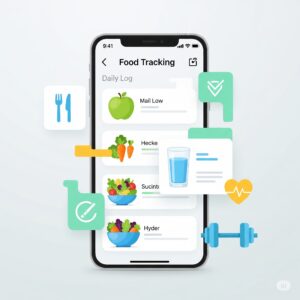
Track what you eat, stay on track with your goals. If you’re trying to eat better but aren’t sure where to start, food tracking apps can really help. They show you what you’re actually eating each day and help you make smarter choices. You don’t have to count every calorie—just build awareness.
What are food tracking apps?
Food tracking apps let you log your meals, snacks, drinks, and even water intake. Popular ones like MyFitnessPal, Lose It!, or Cronometer let you scan barcodes or search for foods. They show how much sugar, protein, fat, and calories you’re eating.
This makes it easier to see where your diet needs fixing. If you’re wondering how to start eating healthy, these apps give you a daily snapshot of your habits and help you stay accountable.
Why they’re great for students?
As a student, life is fast. You grab whatever’s quick—instant noodles, snacks, or takeout. Tracking what you eat helps you pause and think before choosing. It also keeps you consistent, even when your schedule’s all over the place.
Many apps send reminders or offer food suggestions based on your goals. Some even have AI features that adjust your plan based on what you eat over time. So if you’re learning how to start eating healthy, food tracking apps are a smart and easy place to begin.
How to start eating healthy by tracking your meals?
Start simple. Download an app, create your profile, and log one day of meals. Don’t worry about being perfect—just get a feel for it. After a few days, you’ll start to notice patterns. Maybe you’re drinking too little water or missing out on fiber. These small insights can guide big changes.
When you track consistently, you become more aware of what your body needs. You’ll naturally start choosing better options, even without thinking too hard. That’s the secret to how to start eating healthy—build small habits that stick. And food tracking apps make it super easy to do that every day.
How to start eating healthy with personalized AI diets?
Let smart tech create a diet that actually fits your life. Trying to follow random diet plans from the internet doesn’t always work. Everyone’s body and lifestyle are different. That’s where personalized AI diets come in. They create a meal plan that fits your exact needs, goals, and even food preferences.
What are personalized AI diets? How to start eating healthy
Personalized AI diets use smart algorithms to build a custom meal plan just for you. These tools look at your age, weight, health goals, activity level, and even how much time you have to cook. Apps like Lumen, Bite.ai, or CareClinic use this data to suggest meals, track your progress, and adapt over time.
If you’re unsure how to start eating healthy, these AI-powered plans give you a clear path that’s made just for you. No more guessing or following one-size-fits-all diets.
Why they’re perfect for students?
When you’re juggling classes, late-night study sessions, and a tight budget, eating healthy can feel like too much. But with personalized AI diets, you don’t need to figure it all out on your own. These tools suggest what to eat and when—based on your life, not someone else’s.
They even adjust to your feedback. Don’t like eggs? Allergic to dairy? Short on time? The AI removes those options and gives you choices you’ll actually enjoy. That’s a big help when you’re trying to learn how to start eating healthy without turning your life upside down.
How to start eating healthy with a personalized plan?
Start by choosing a trusted AI-based app or tool. Input your basic info and set your food goals—like building muscle, losing weight, or just having more energy. The app will then create a plan that’s easy to follow, often with shopping lists and prep tips included.
Following a plan made just for you helps you stay motivated. And when it adjusts based on your real habits, it keeps you moving forward. That’s the real power of using tech to figure out how to start eating healthy—it learns with you and grows with your goals.
How to start eating healthy on a busy student schedule?

Eat better—even when your calendar’s packed. Between classes, assignments, and maybe even a part-time job, finding time to eat right can feel impossible. But here’s the good news: you don’t need hours in the kitchen or a fancy meal plan. With a few small changes, you can make healthier choices every day—even on your busiest days.
Quick meal prep makes a big difference
Meal prep doesn’t have to mean cooking all Sunday. It can be as simple as chopping veggies ahead of time or making overnight oats the night before. Prepping just one or two meals in advance can save you from skipping meals or reaching for junk food.
If you’ve been asking yourself how to start eating healthy, prepping your meals—even just breakfast—can help you stay consistent without adding stress.
Keep healthy snacks within reach
Busy schedules often lead to random snacking. Instead of chips or cookies, stock up on quick, healthy snacks like trail mix, Greek yogurt, boiled eggs, or fruit. Keep some in your bag or dorm so you’re not stuck with vending machines.
This habit alone can teach you how to start eating healthy, even when you’re running between lectures or late to study group.
Use tech to save time and stay on track How to start eating healthy
There are tons of apps that can help you track what you eat, remind you to drink water, and even suggest fast, healthy recipes. Try apps like Yazio, Mealime, or Lifesum. They’re perfect for students who want to eat better without spending hours thinking about food.
When you use tools to plan your meals and snacks, it becomes easier to stick to your goals. This is one of the smartest ways to learn how to start eating healthy with a full schedule.
How to start eating healthy with a clean eating routine?
Skip the junk. Keep it fresh and simple. Clean eating isn’t about counting every calorie or cutting everything fun out of your life. It’s just about choosing real, whole foods over processed stuff. And the best part? It’s easy to start, especially if you build a simple routine around it.
What does clean eating mean?
Clean eating means focusing on foods that are close to their natural state. Think fruits, veggies, whole grains, lean proteins, and healthy fats. It also means saying “no thanks” to heavily processed snacks, sugary drinks, and fast food whenever you can.
If you’re learning how to start eating healthy, switching to clean eating helps you reset your habits without going extreme. You still get to eat well—and enjoy it too.
Build your clean eating routine step by step
Don’t change everything overnight. Start small. Maybe swap soda with water or choose brown rice instead of white. Add a piece of fruit to your breakfast. These tiny changes are easier to stick with, and they build up fast.
Making one healthy choice per day is a simple way to practice how to start eating healthy without feeling overwhelmed. You’ll slowly build a routine that feels natural—not forced.
Keep it student-friendly and realistic
As a student, your schedule might be wild. So keep clean eating flexible. Prep some go-to meals like veggie wraps, grilled chicken bowls, or overnight oats. Buy snacks like nuts, apples, or hummus so you always have something healthy nearby.
You don’t need to follow strict rules to figure out how to start eating healthy. Just eat more real food, less junk, and build a routine that fits your life—not the other way around.
How to start eating healthy without dieting or stress?
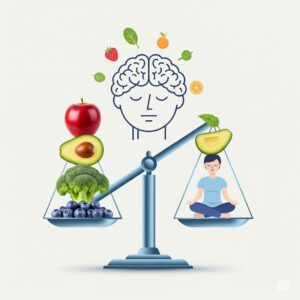
Ditch the rules. Focus on habits that feel good. Dieting can feel like a never-ending cycle of starting, stopping, and feeling guilty. But eating healthy doesn’t have to be stressful. You can build better habits without counting calories or cutting everything you love. It’s all about balance and making small, smart choices that fit your life.
Focus on what you can eat. How to start eating healthy
Instead of thinking about what to avoid, focus on adding good stuff to your plate. Add more veggies to your pasta. Drink a glass of water before your coffee. Snack on fruit instead of chips. These little swaps make a big difference over time.
If you’re wondering how to start eating healthy, this positive approach helps you build momentum without feeling restricted. You’re not on a diet—you’re just eating with intention.
Build habits, not rules
Strict food rules usually don’t last. But habits do. Try simple routines like eating breakfast every day, carrying a healthy snack in your bag, or drinking more water. These habits feel easy and natural—and that’s what makes them stick.
When you think about how to start eating healthy, focus on routines that reduce stress, not add to it. You don’t need to be perfect. You just need to be consistent.
Be kind to yourself along the way
You’ll have days where you grab fast food or skip a meal—and that’s okay. What matters is what you do next, not what you did yesterday. Progress isn’t about being strict. It’s about showing up again, learning, and trying.
This mindset is key if you’re serious about learning how to start eating healthy without stress. Let go of the guilt. Enjoy your food. And take it one step at a time.
How to start eating healthy with grocery list technology?
Shop smart. Eat better. Save time and stress. One of the easiest ways to eat healthy is to plan your grocery shopping. But let’s be real—making lists and figuring out what to buy isn’t always fun. That’s where grocery list technology comes in. It helps you organize what to eat and buy without wasting time (or money).
What is grocery list technology?
Grocery list apps and tools help you create smart shopping lists in seconds. Some apps, like Out of Milk, Mealime, or AnyList, even suggest healthy foods based on your meal plans or diet goals. Others let you scan items, save past purchases, and sync your list with family or roommates.
If you’re not sure how to start eating healthy, these tools make shopping feel less confusing. You don’t walk into the store guessing—you go in with a plan.
Make shopping faster and healthier
When you use grocery list apps, you skip impulse buys and stick to your goals. You can add whole foods, like fruits, veggies, whole grains, and lean proteins, to your list in advance. Many apps also group items by section, so you shop faster and avoid random, processed snacks.
Using this tech is one of the easiest ways to learn how to start eating healthy—you spend less, eat better, and feel more in control of your food.
Keep it simple and student-friendly
As a student, it’s easy to grab whatever’s cheapest or fastest. But with smart grocery lists, you can plan for affordable, healthy meals. You can even create lists for quick breakfasts, study snacks, or budget-friendly dinners.
So if you’ve been thinking about how to start eating healthy, start by changing how you shop. A well-planned list can make every meal better—and your week way easier.
How to start eating healthy by tracking your macros?
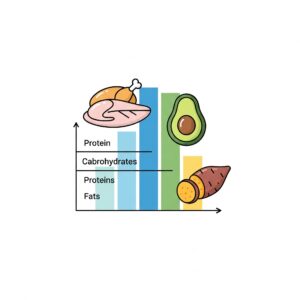
Understand what you’re eating, not just how much. If you’re trying to eat better, counting calories isn’t the only way. Tracking macros—short for macronutrients—gives you a better look at what your food is made of. It helps you balance protein, carbs, and fats to fuel your body the right way.
What are macros, and why track them?
Macros are the three main nutrients your body needs: proteins, carbohydrates, and fats. Each one plays a different role. Protein helps build muscle, carbs give you energy, and fats support brain and hormone function.
If you’re learning how to start eating healthy, tracking macros helps you eat the right mix for your body and goals—not just fewer calories.
How tracking macros helps you eat smarter
When you know your macro breakdown, you start to see food differently. You’ll realize that a “healthy” snack might be low in calories but high in sugar, or that your dinner has no protein at all. That awareness can help you make better choices each day.
Apps like MyFitnessPal, Carb Manager, and Macrostax make macro tracking easy. You just log your food, and they do the math for you. This is one of the best ways to learn how to start eating healthy while still enjoying your favorite meals.
Keep it flexible and stress-free How to start eating healthy
You don’t need to be perfect. Start by tracking one or two meals a day. Get a feel for your usual intake. Then slowly adjust—maybe add more protein to lunch or cut back on sugary snacks.
This relaxed approach helps you understand how to start eating healthy without feeling pressured or overwhelmed. It’s all about learning what your body needs and building balance over time.
How to start eating healthy with low-effort habits?
Small changes that actually stick. You don’t need a full meal plan, fancy groceries, or tons of willpower to eat better. Sometimes, the best results come from small actions done daily. These low-effort habits help you build healthier routines without stress.
Keep healthy food visible and ready
One of the easiest tricks? Put healthy food where you can see it. Keep fruit on your desk. Place a water bottle in your backpack. Prep a sandwich or salad the night before. These little actions take minutes but make healthy choices way more convenient.
If you’re not sure how to start eating healthy, start with what’s around you. Make better options easier to grab than junk food.
Set tiny goals, not giant ones
Instead of trying to change everything at once, focus on one habit at a time. Drink a glass of water when you wake up. Add one veggie to your lunch. Eat at the same time each day. These small wins add up fast.
Trying to figure out how to start eating healthy can feel overwhelming, but low-effort habits make it manageable. You won’t even feel like you’re making a huge change—but you are.
Use reminders and routines to stay on track
Set a daily reminder to eat a snack, drink water, or prep your meals. Use phone alarms, sticky notes, or calendar alerts. Habit tracking apps can also help. Once a habit becomes routine, it takes way less effort to stick with it.
That’s the real secret to how to start eating healthy—building habits that fit into your day, not take over it. And the simpler the habit, the easier it is to repeat.
How to start eating healthy with simple meal prep ideas?
Quick prep = better choices all week. Meal prep doesn’t have to mean cooking for hours. You can make eating healthy way easier by prepping a few basic things ahead of time. Just a little planning can save money, time, and stress when you’re hungry and busy.
Start with basic ingredients
Pick a few simple ingredients that you like and can mix in different ways. Think grilled chicken, boiled eggs, rice, pasta, beans, or frozen veggies. Cook these in batches once or twice a week. Store them in clear containers, so you always know what’s ready to eat.
If you’re wondering how to start eating healthy, this is a great place to begin. Prepping these basics means you always have something healthy to build a meal with.
Make grab-and-go meals
Prep lunchboxes, smoothie packs, or overnight oats the night before. Slice up fruit or veggies for snacking. Use reusable containers to store them in your fridge. When you’re rushing out in the morning, just grab and go.
These quick meal options take the guesswork out of eating. You don’t have to figure out what to eat when you’re already starving. That’s a key part of how to start eating healthy without overthinking it.
Keep it fun, not boring
Try rotating your ingredients or using simple sauces and spices. Toss your chicken in BBQ one day, or soy sauce the next. Small changes keep meals interesting, so you don’t get bored and give up.
Meal prep isn’t about being perfect—it’s about being ready. And when you’re ready, how to start eating healthy feels a lot less stressful. You’ll actually look forward to eating what you made.
FAQs: How to start eating healthy?
What’s the first step if I don’t know where to begin?
Start small. Replace soda with water. Add a fruit to your breakfast. Don’t change everything at once. If you ask how to start eating healthy, the answer is: start with what feels easy and build from there.
Can I eat healthy on a tight budget?
Yes, totally. Buy in bulk. Go for frozen veggies and canned beans. Cook at home more often. You don’t need fancy foods. When thinking about how to start eating healthy, focus on affordable basics like oats, eggs, rice, and bananas.
What if I don’t like vegetables?
Try them in different ways. Roast carrots, blend spinach into smoothies, or dip cucumbers in hummus. Keep trying until something sticks. This is part of figuring out how to start eating healthy in a way that works for you.
Do I have to stop eating fast food?
Not completely. Just don’t eat it every day. You can still enjoy it sometimes. Try healthier picks like grilled options or smaller portions. Balance is a big part of how to eat healthy long-term.
How do I stay consistent with healthy eating?
Prep your food. Keep snacks like nuts or fruit nearby. Plan simple meals. When your food is ready, you’re more likely to eat it. Staying consistent is key to how to start eating healthy and stick with it.
What’s one habit that makes a big difference?
Drink more water. It’s simple but powerful. It keeps you full and helps your body work better. Starting this one habit can lead to more good changes over time.
Conclusion
Learning how to start eating healthy doesn’t have to be hard. Just begin with small, easy steps. Swap out junk food, drink more water, and keep your meals simple.
The best part? You don’t need fancy diets. Stick to foods you know, prep ahead when you can, and listen to your body. That’s the real trick behind how to start eating healthy in a way that lasts.
Remember, it’s okay to enjoy treats sometimes. Balance matters more than being perfect. If you’re still wondering how to start eating healthy, just start today—even if it’s just one small change. Healthy habits build one bite at a time.

